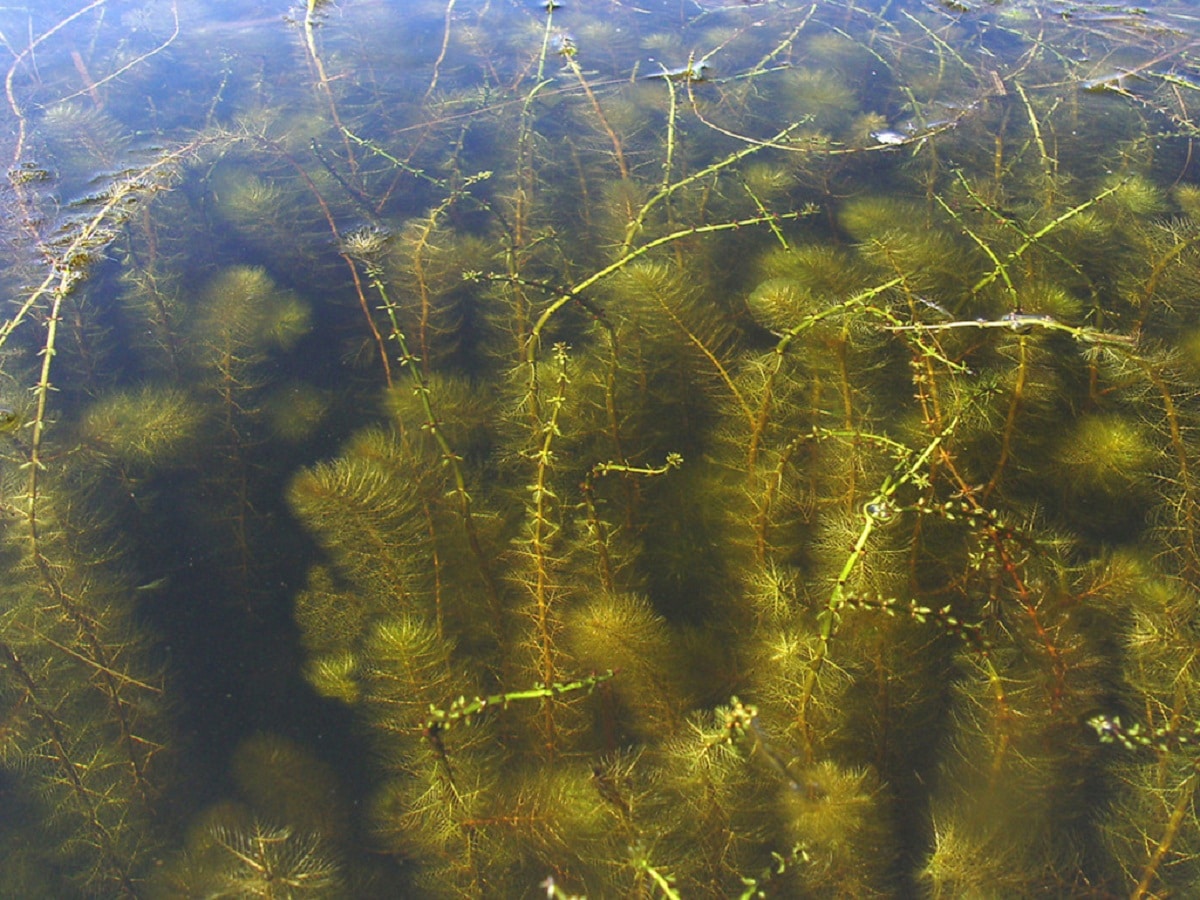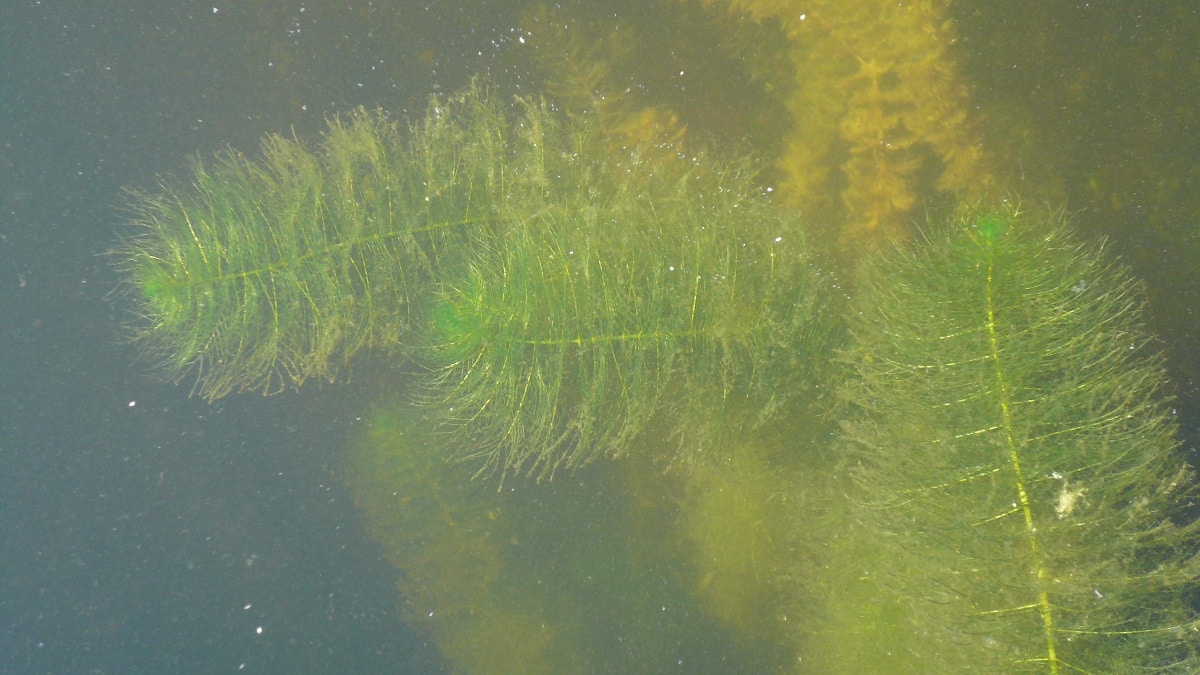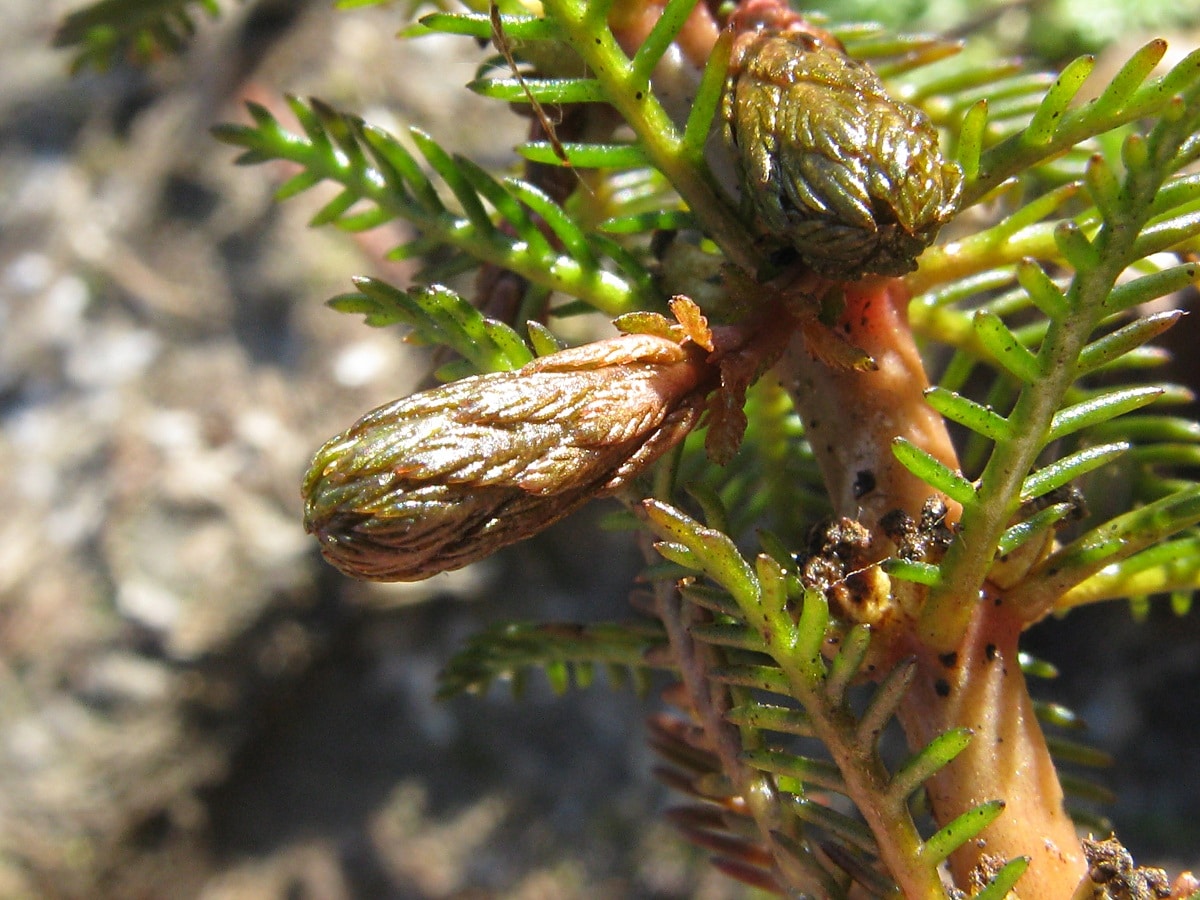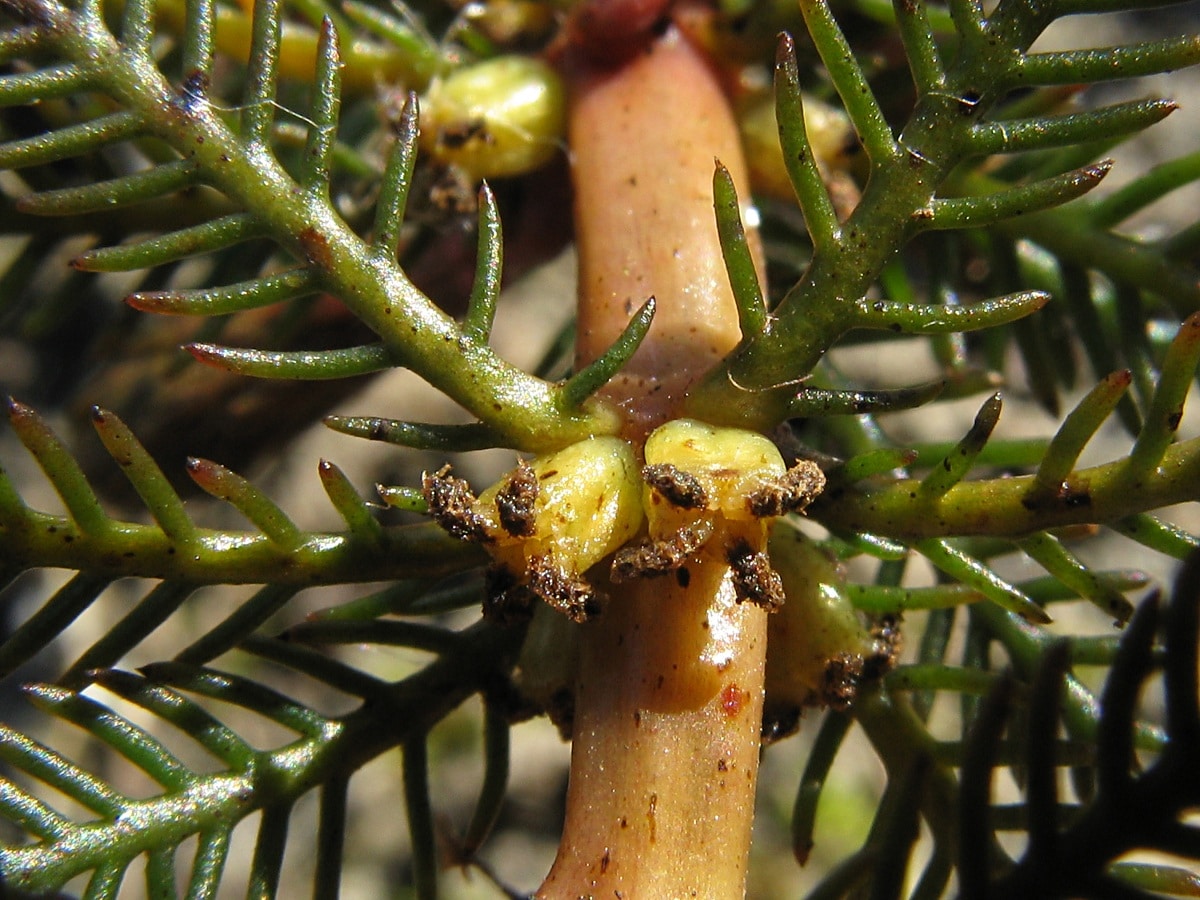
Today we are going to talk about a species of aquatic grass that is cataloged within the group of oxygenating plants. Myriophyllum verticillatum. It is a plant that is found within the Haloragaceae family within the genus Myriophyllum. In this genus there are about 45 aquatic species. The vast majority of these species inhabit freshwater ecosystems. The essential characteristic of all these plants is that they have an almost cosmopolitan distribution.
For this reason, we are going to dedicate this article to tell you everything you need to know about the characteristics and care that the Myriophyllum verticillatum.
Key features

It is a type of aquatic grass that is cataloged within the group of oxygenating plants. These plants have the ability to thrive in both fresh and brackish stagnant waters. They are described within the group of perennial herbaceous plants and can grow submerged both in ponds and in aquariums. This makes them plants that we can have in our garden and fish can be included in the pond to promote development.
It is a plant that has long stems and is highly branched. If the plant grows in good conditions, the stems can reach up to 3 meters in length. The stems usually have whorls and are generally composed of 5 leaves. These leaves are quite long and eThey are divided into about 30 filiform segments. This plant has a rather curious growth. And it is that they grow tending to cover all the land that they have at their disposal to increase the absorption capacity of nutrients.
If we sow the Myriophyllum verticillatum in a pond you will end up occupying pain completely. One of the problems that the plant can develop if they grow environments with too many nutrients is that the growth of the leaves can create problems of filtration of solar radiation. As for its flowers, they can grow in the shape of a spike although they are very inconspicuous flowers. They are not flowers that have a high ornamental interest. As they are not very showy and are located above the water, they serve to attract some insects that pollinate and can circulate freely through the air.
The flowers are found in whorls of 5 and feature finely divided bracts. They have a greenish yellow color and approximately measure about 3 mm. The vast majority of them are unisexual and have male flowers at the top and female flowers at the bottom.
Distribution and habitat of Myriophyllum verticillatum

This plant is almost cosmopolitan in distribution but is usually found in greater abundance in the northern hemisphere. The flower growing season usually begins in late spring and lasts throughout the summer.
There are several records of this plant that date back to the XNUMXth century and at that time some species of aquatic plants were described and later they were collected in one of the first botanical books that dealt with this type of plants. The full name has an etymology that comes from the Greek myri, which translates as too much to count, and phyll, which means leaf. Thus, its full name means plant with many leaves to count. The most important thing about this plant are its leaves and not its flowers and they are usually used on shelves to promote oxygenation of the water.
Uses and care of Myriophyllum verticillatum

Many people have a pond in their garden and place fish and plants. Since fish breathe continuously, permanent oxygenation is required. This type of plant will help to renew the air in the pond through the process of photosynthesis. Therefore, the Myriophyllum verticillatum it is enough Used like others of its kind to place both in ponds and aquariums.
Keep in mind that it is a plant that grows quite fast and that its stems can reach about 3 meters in length. This means that if we place the plant in an aquarium we have to perform some maintenance tasks higher than those we must do if we place it in a pond. Thanks to its oxygenating properties, it can help maintain good conditions while remaining in aquariums. However, its rapid growth must be considered and kept under control.
It is a plant that will make the garden look quite good and can give it a very natural touch with little care. If we place it in ponds it hardly needs a few pruning every long time. As for the care of the Myriophyllum verticillatum We see that it requires a lot of care in addition to keeping it in a sufficiently humid place or under water. Being an aquatic plant it adapts quite easily to environments and it does not need too much fertilizer. If you have fish in the pond, the organic matter that they expel can serve as feedback so that you will not need an external fertilizer.
On the other hand, the fertilization of this plant in the pond can be carried out, if necessary, with some special soluble fertilizers. It must be taken into account that these fertilizers must be used at very low doses so as not to deteriorate the quality of the water, especially if there are times in the pond. Its maintenance is quite easy, since we only have to trim its branches to avoid excessive growth and invade all the available space.
Curiosities
Many people acquire these plants for their aquariums that cost it because of the following curiosities:
- Its flowers are spiral-shaped and, although they are yellow, it gives a more greenish appearance.
- Its female flowers grow below and the male ones above.
- It is a plant that can bloom during the spring season and extends during the summer season.
- It is one of the aquatic plants with the longest stem length.
- Its leaves are highly segmented.
- Fish often lay their eggs at the bottom of these plants because they feel protected.
I hope that with this information you can learn more about the Myriophyllum verticillatum and their characteristics.